



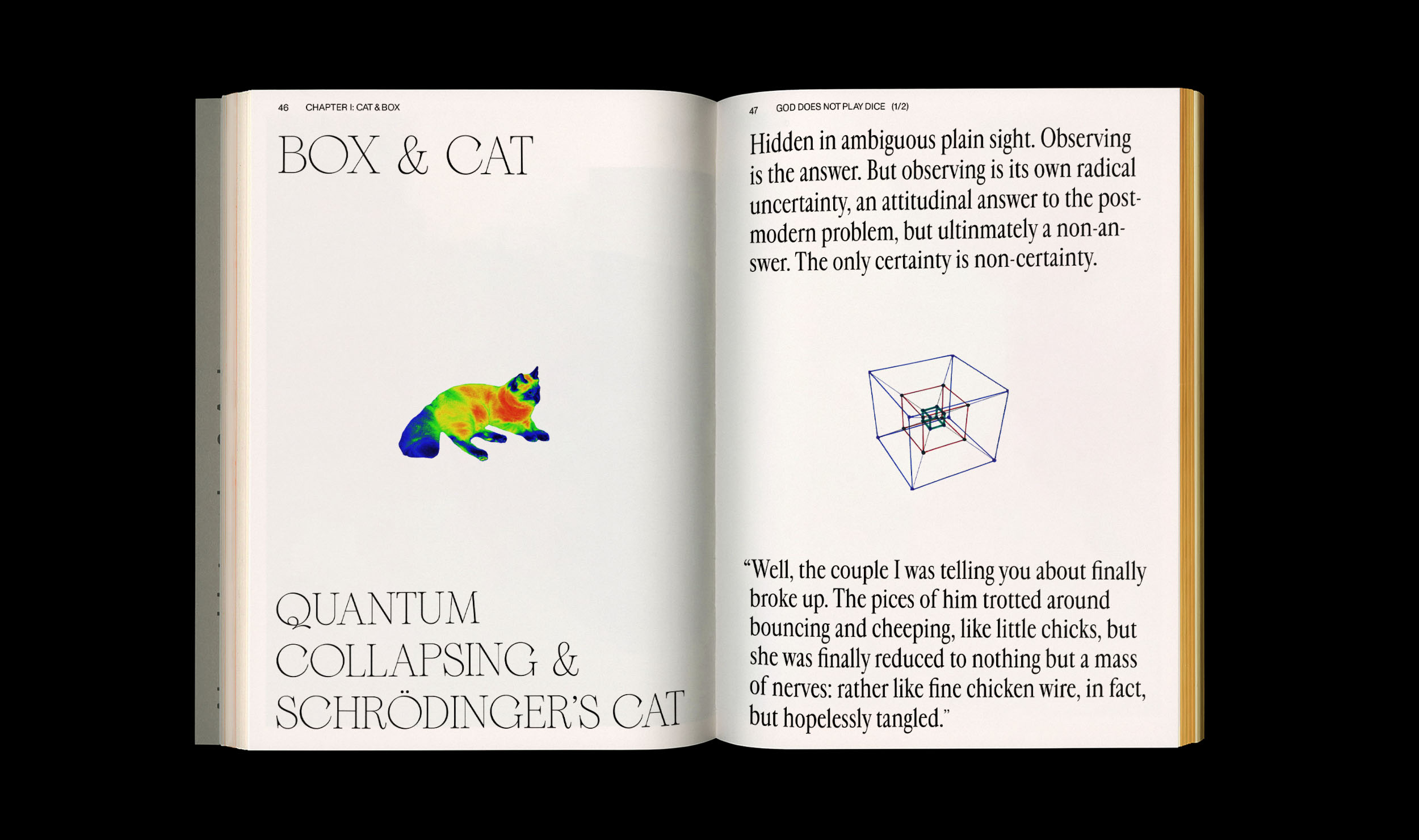




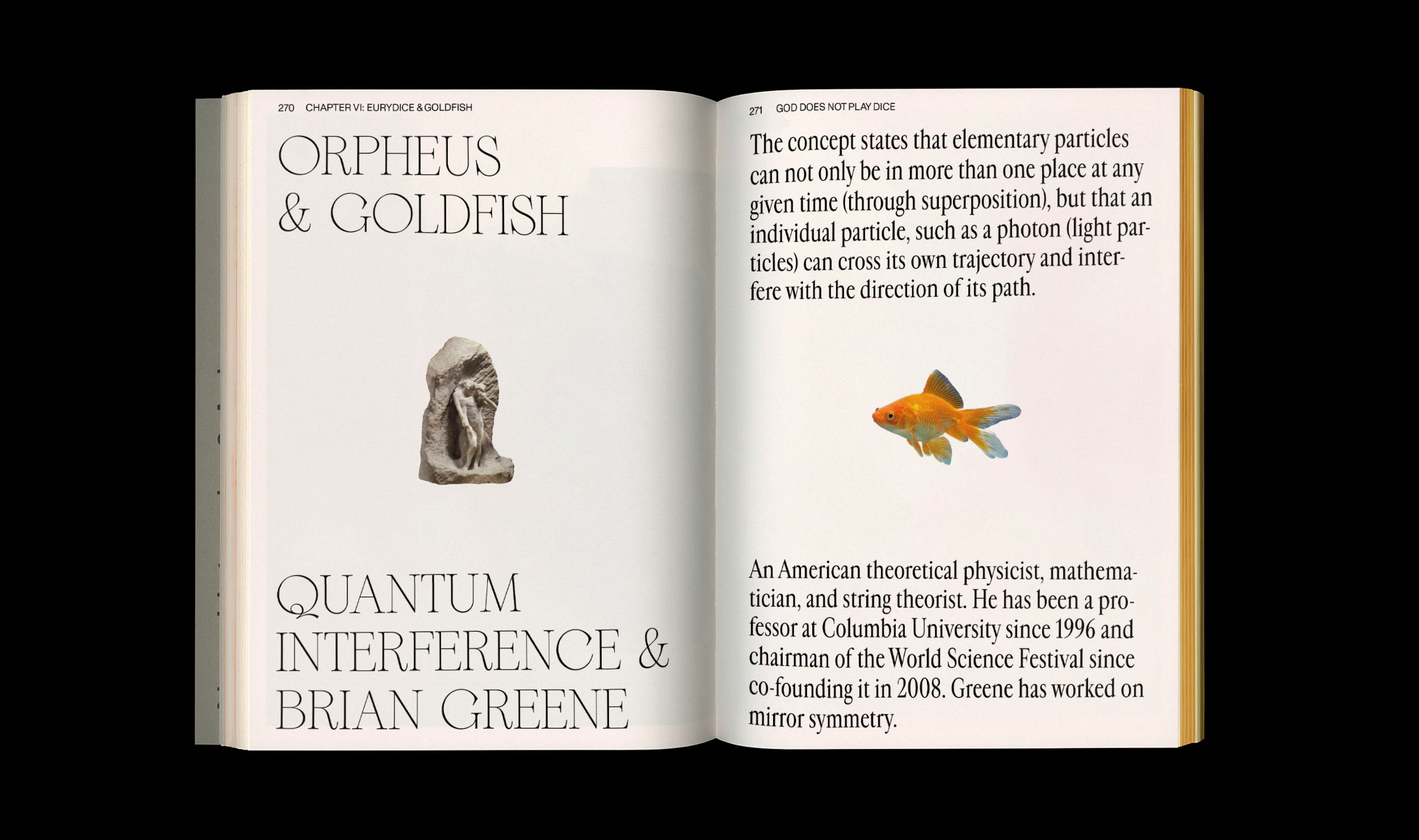
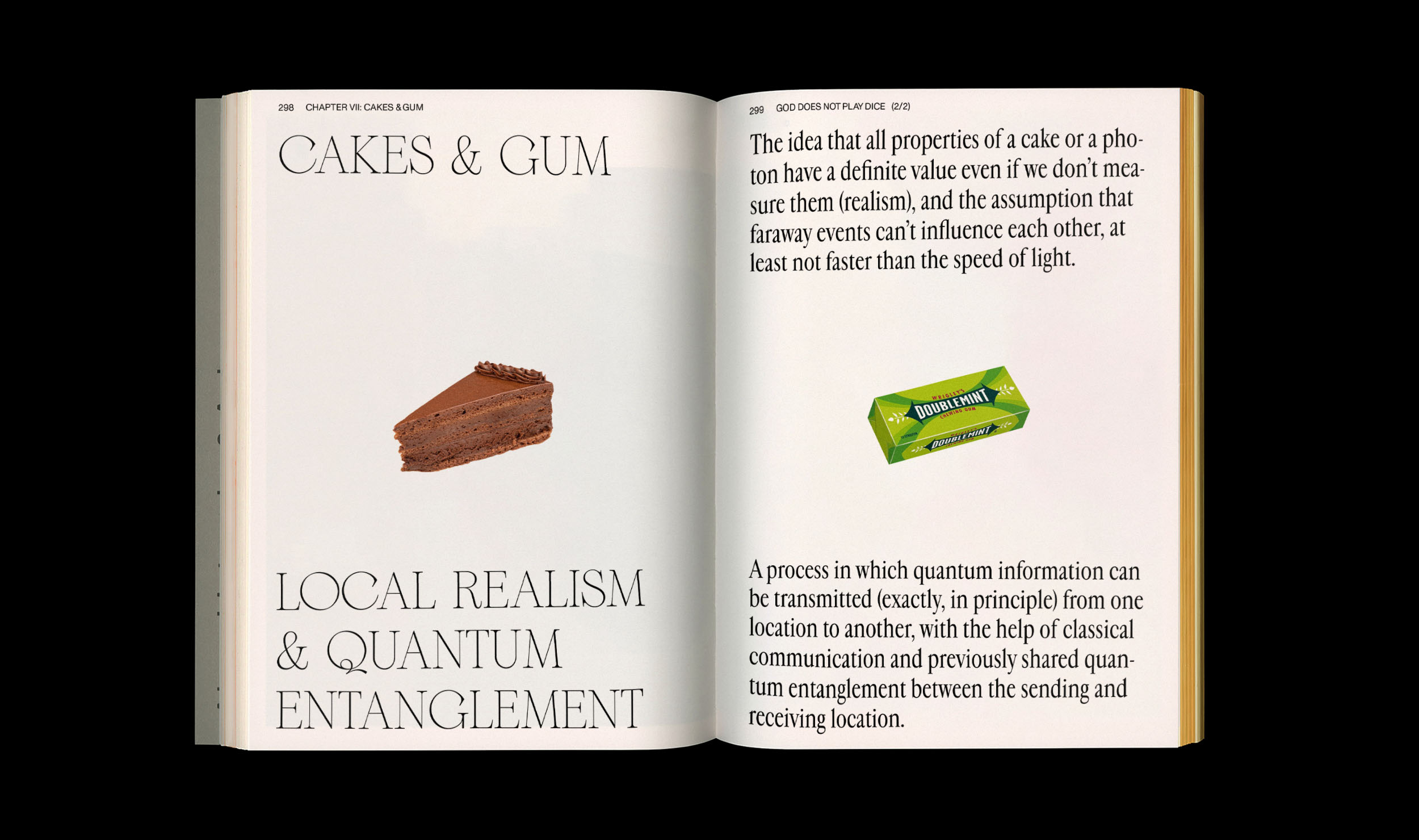
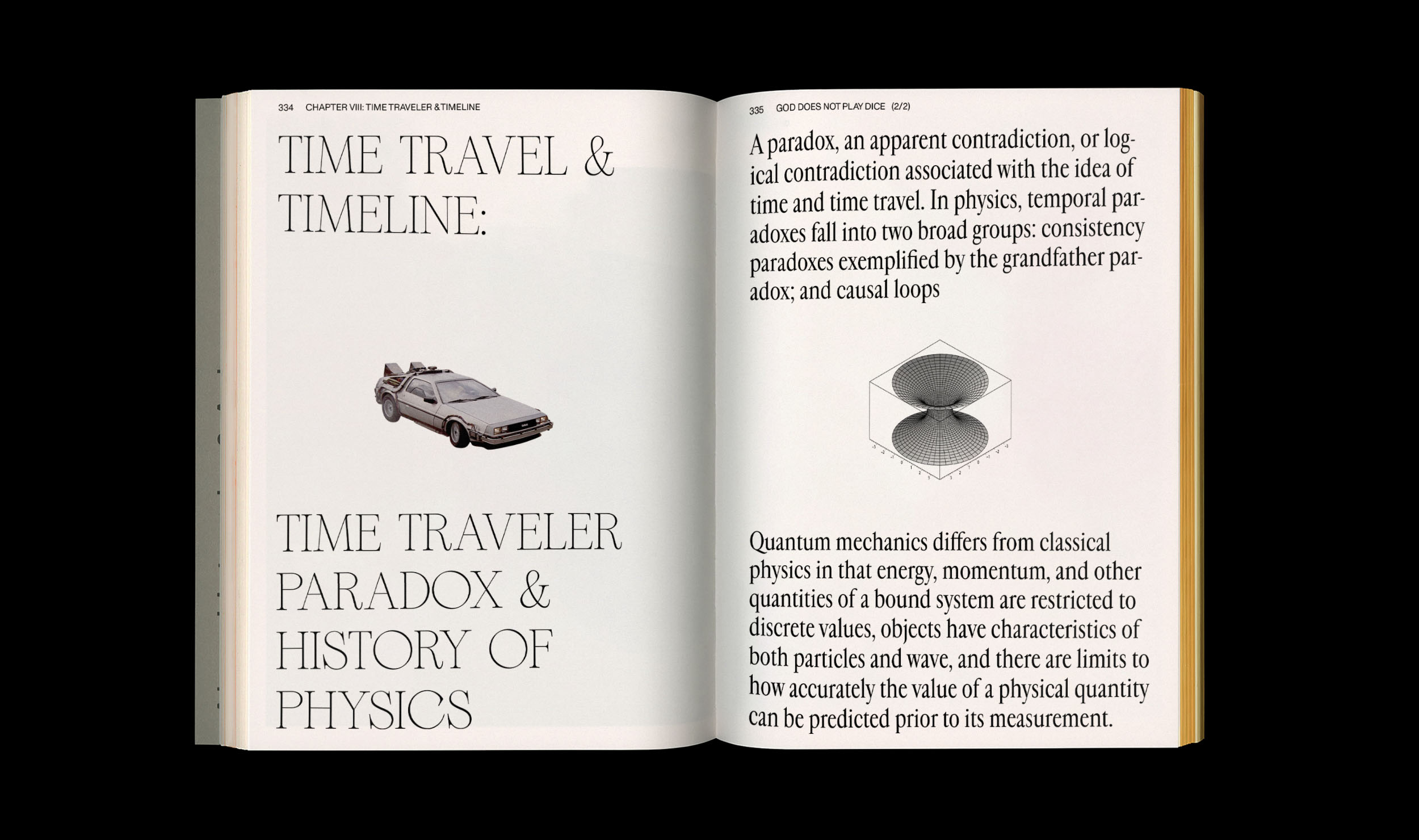



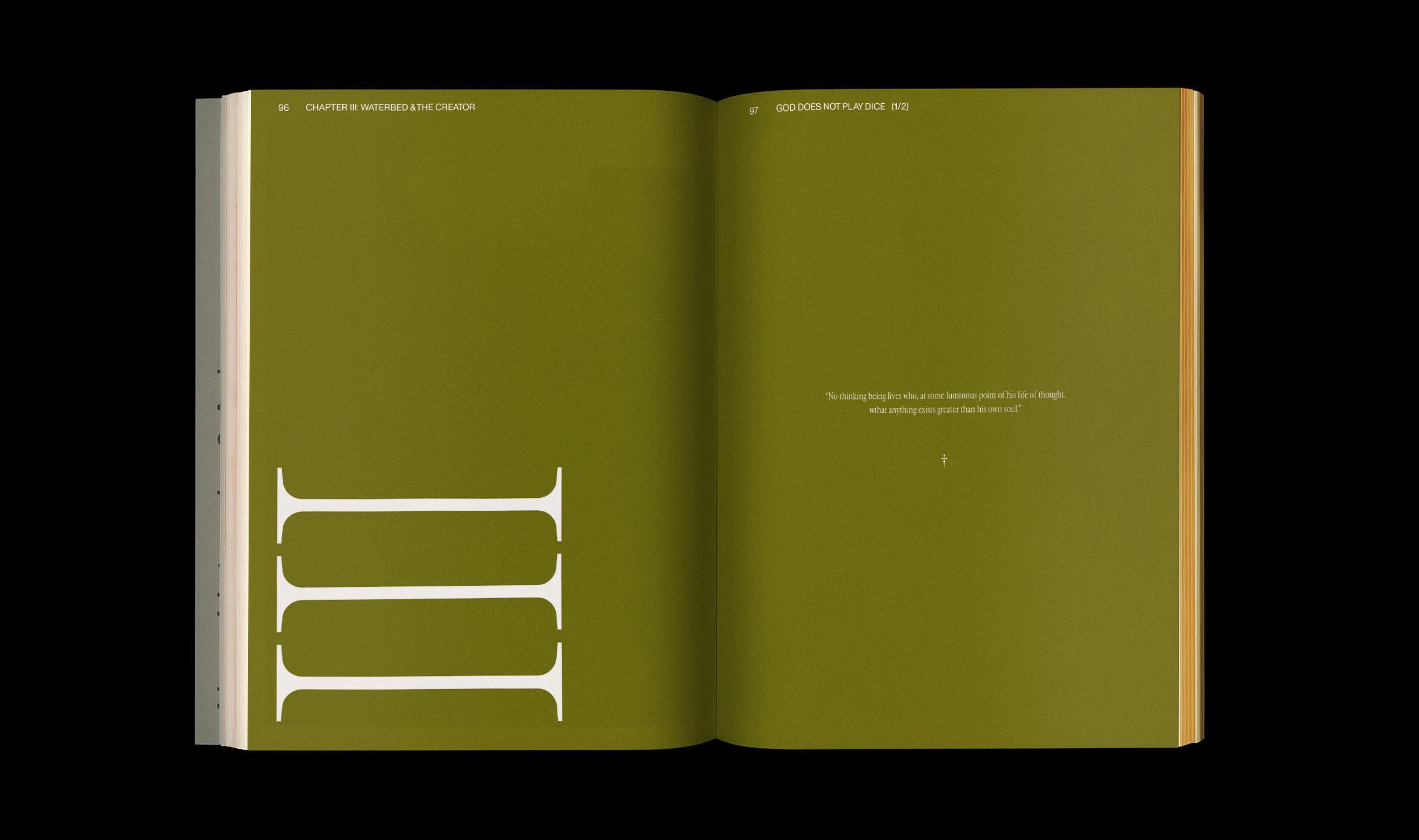






Prologue
(0/9)
nulla.
Prologue:
Quantum Eurydice
Quantum Eurydice
The book follows Orpheus and Eurydice’s return from the underworld, paralleling the observer effect in quantum physics—Orpheus’s glance collapses Eurydice’s potential existence into non-existence.
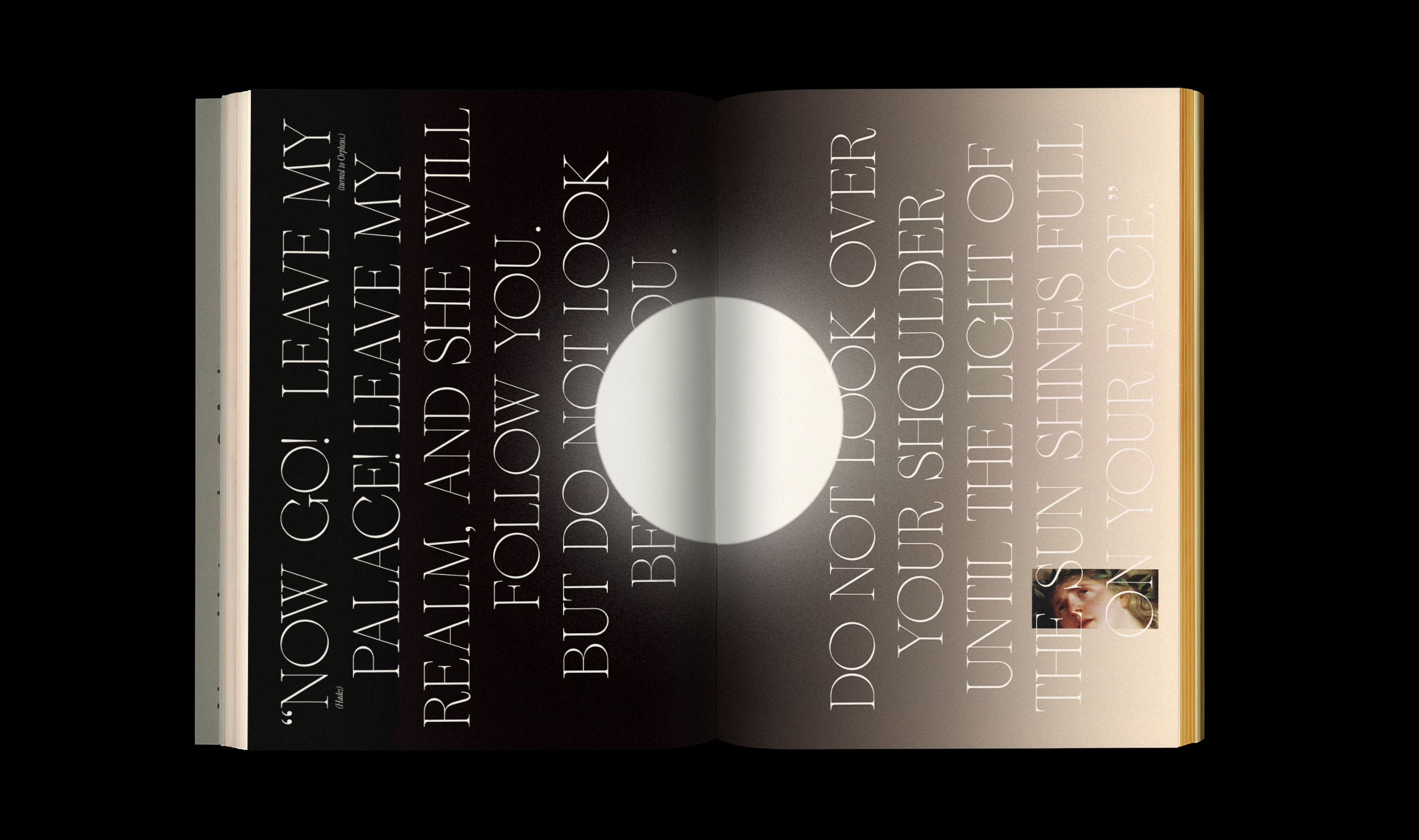



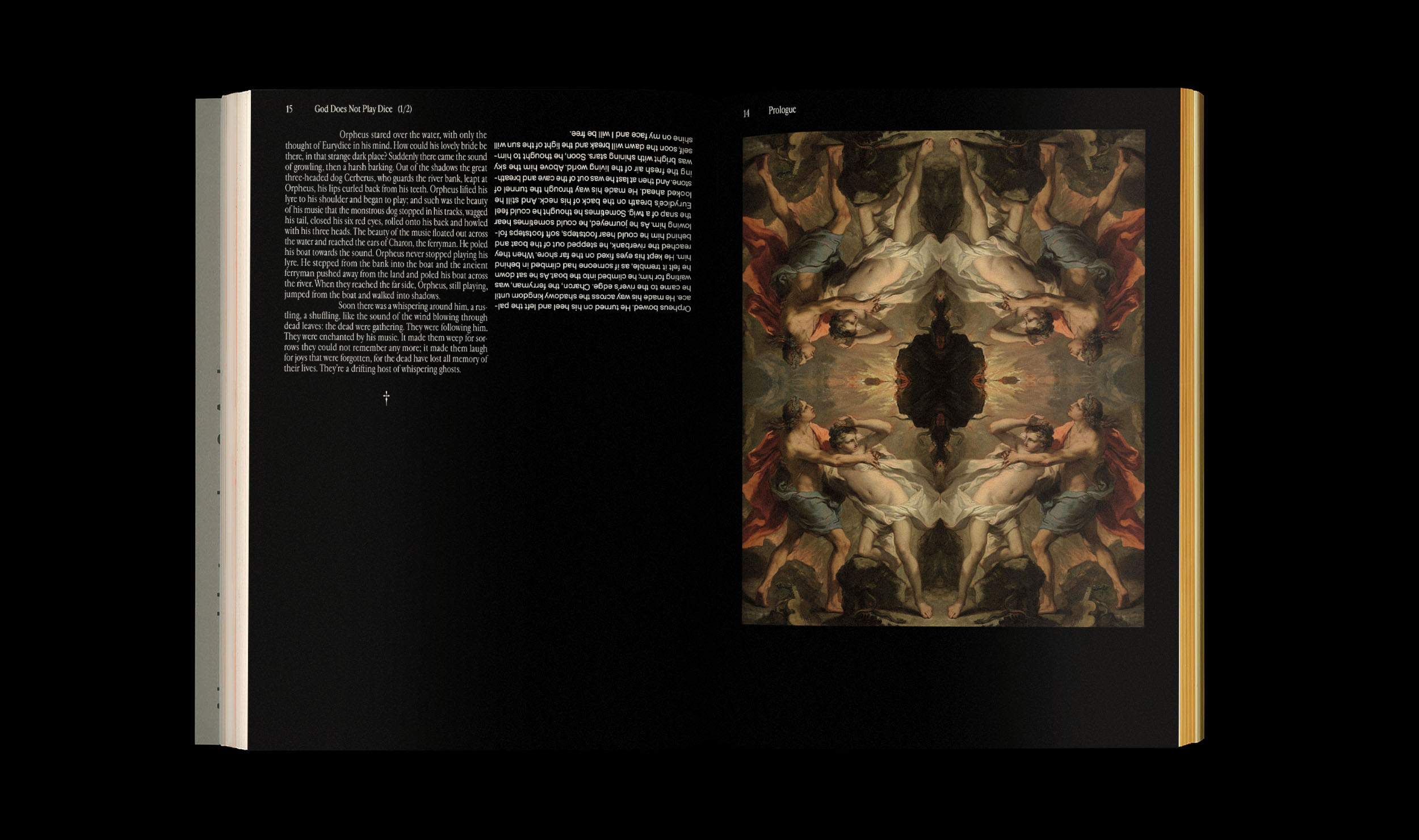
Chapter I
(1/9)
I.
Box & Cat:
Quantum Collapsing & Schrödinger's Cat
Quantum Collapsing & Schrödinger's Cat
Schrödinger's cat thought experiment demonstrates quantum superposition, where the cat is both alive and dead until observed, and quantum collapsing is the process where its state becomes definite upon observation, illustrating a key quantum concept.
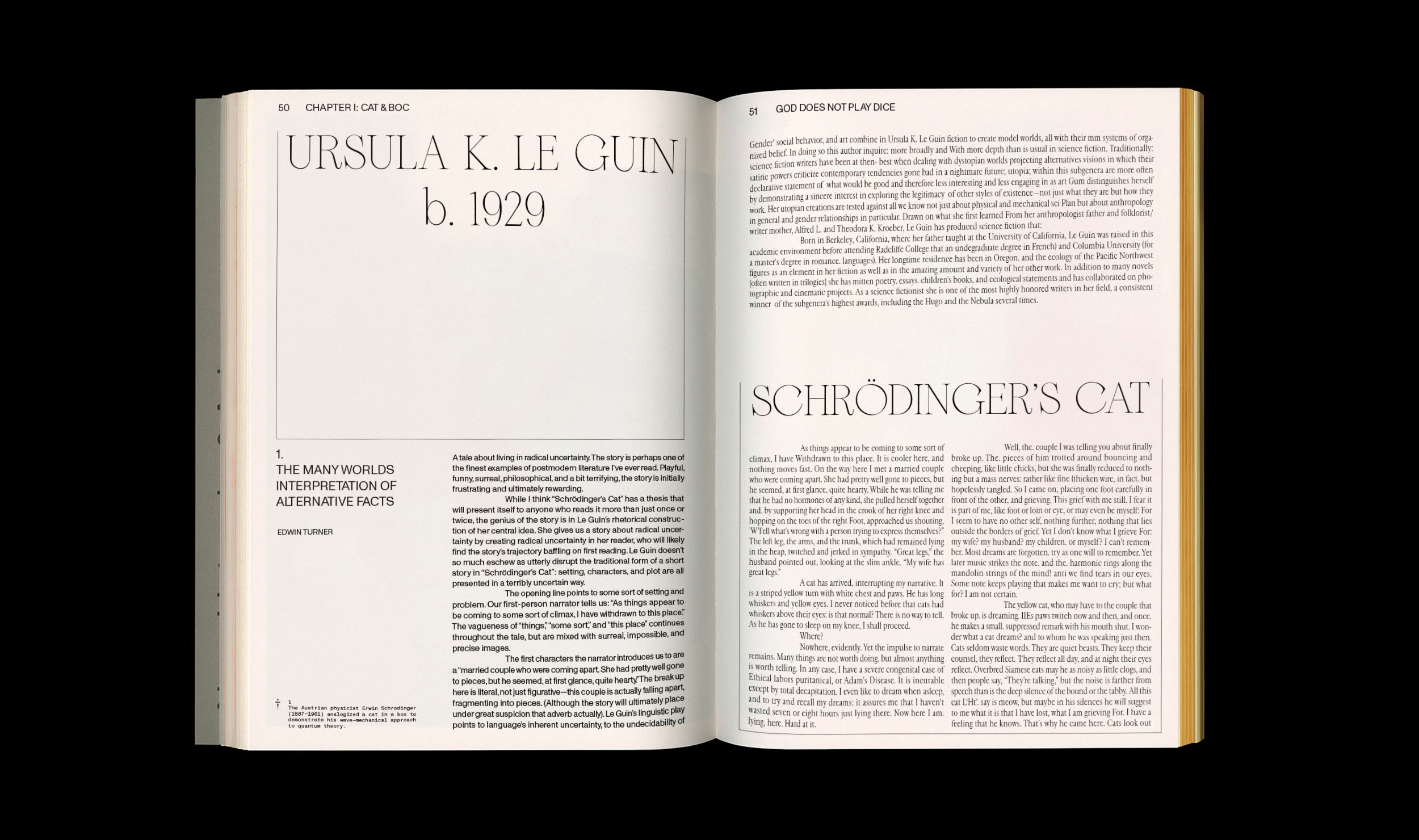




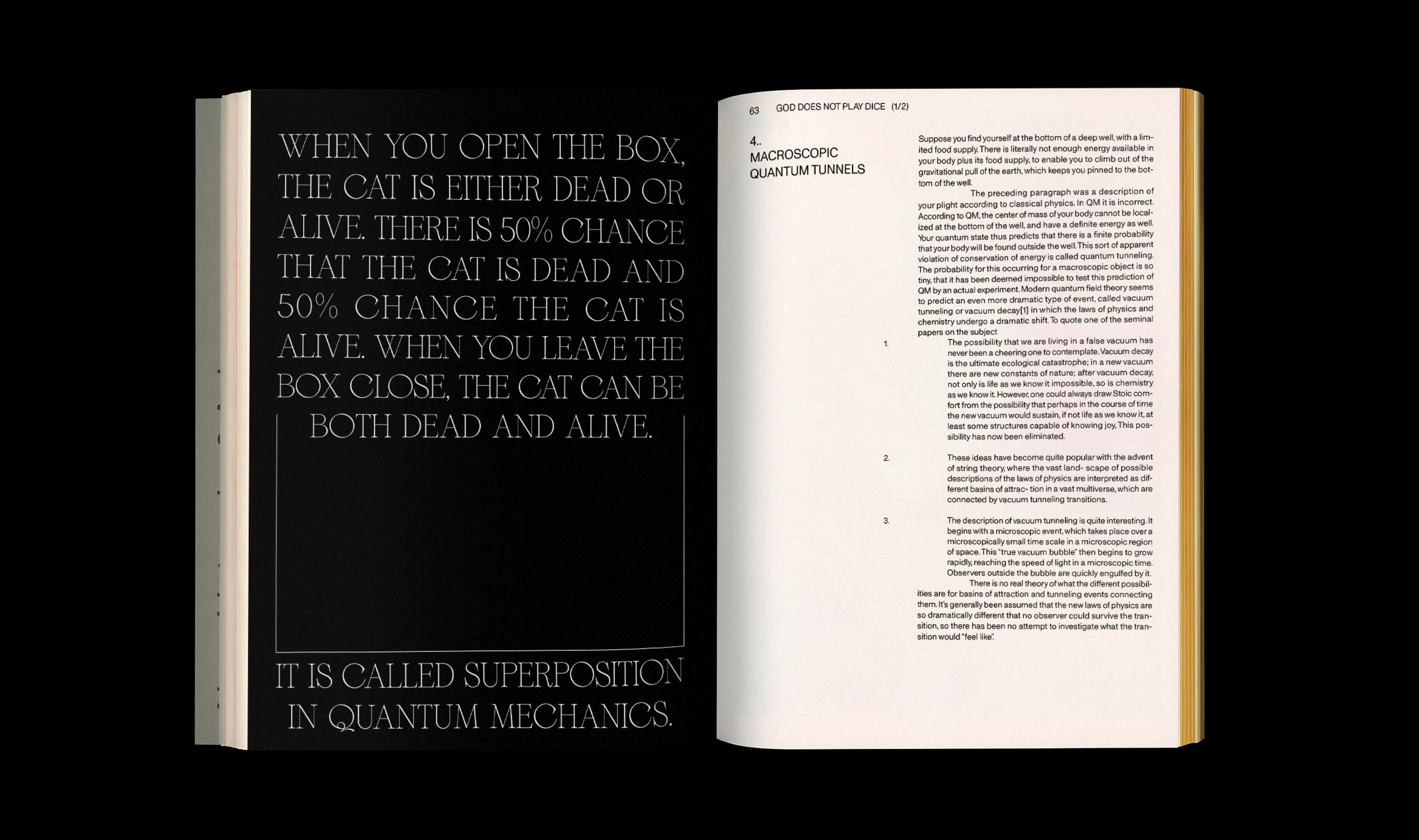
Chapter II
(2/9)
II.
Dice & Oil Droplet:
Einstein-Bohr Debate & Pilot Wave
Einstein-Bohr Debate & Pilot Wave
The Bohr-Einstein debates centered on the interpretation of quantum mechanics, with Einstein criticizing its probabilistic nature, while pilot wave theory emerged as an attempt to provide a deterministic alternative.





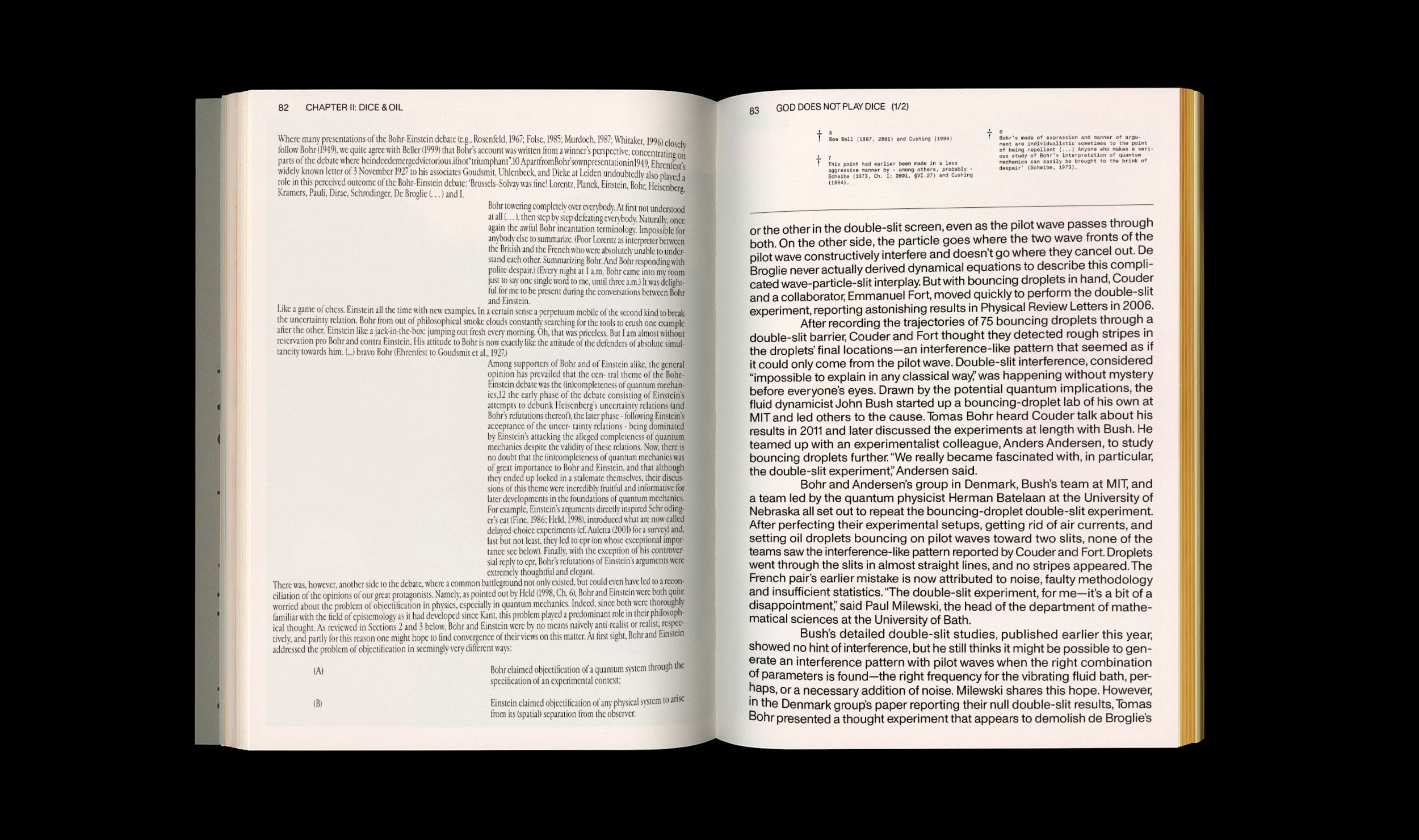
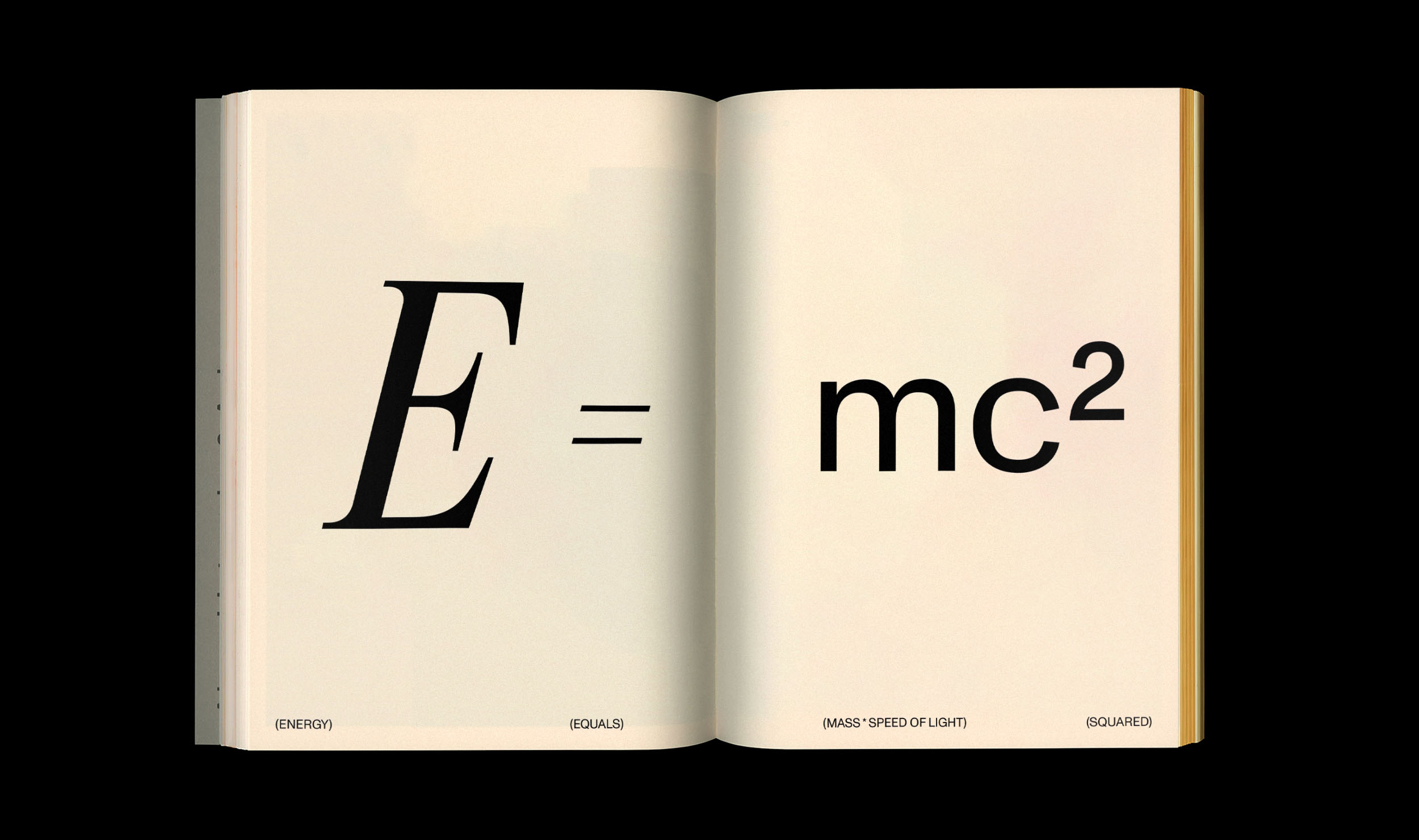
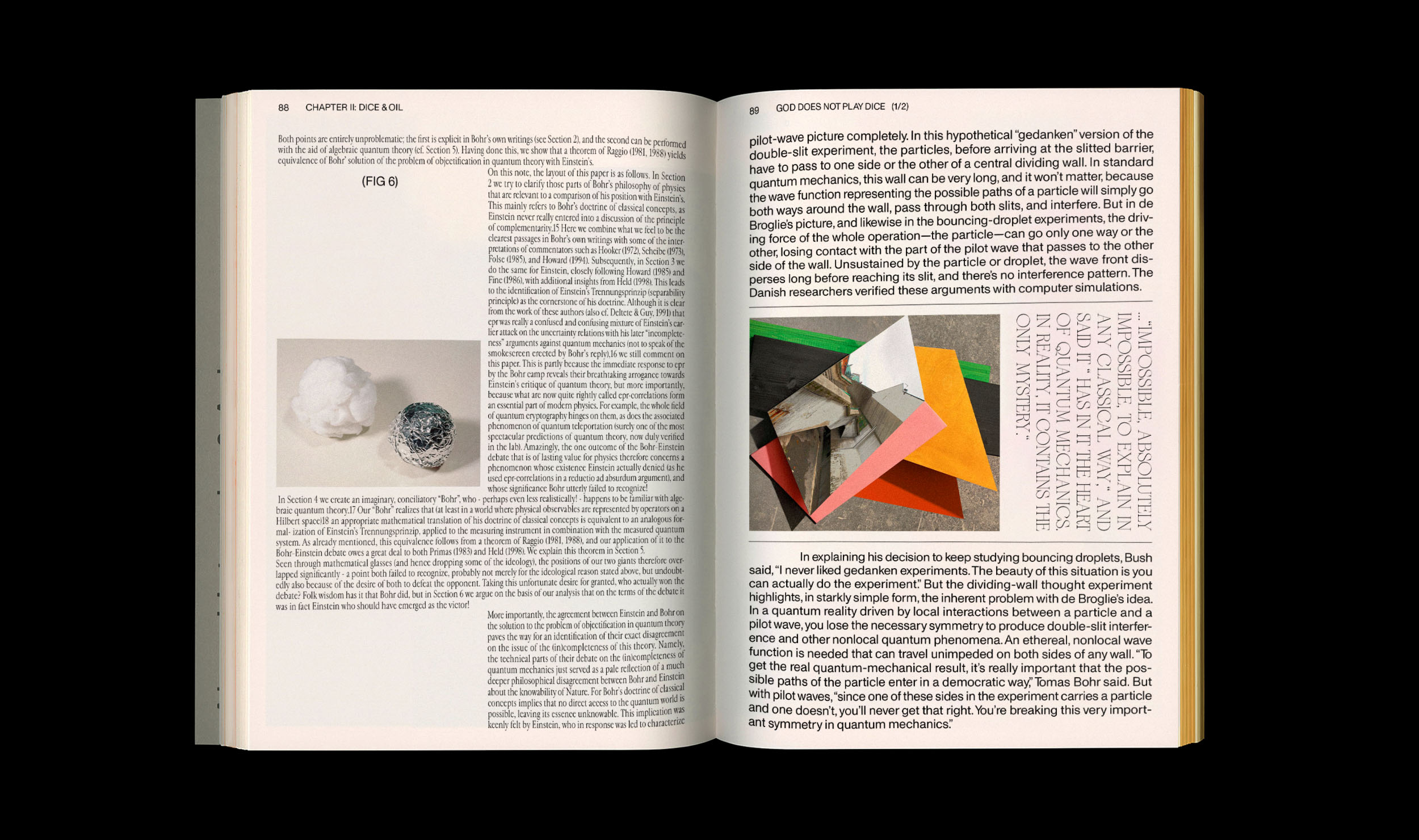
Chapter III
(3/9)
III.
Waterbed & The Creator:
Edgar Allan Poe & Albert Einstein
Edgar Allan Poe & Albert Einstein
Edgar Allan Poe's extensive non-fiction work, 'Eureka,' and his perception of man's relationship with God share a notable parallel with Albert Einstein's study of the theory of relativity and his comparison of the universe to a water bed.



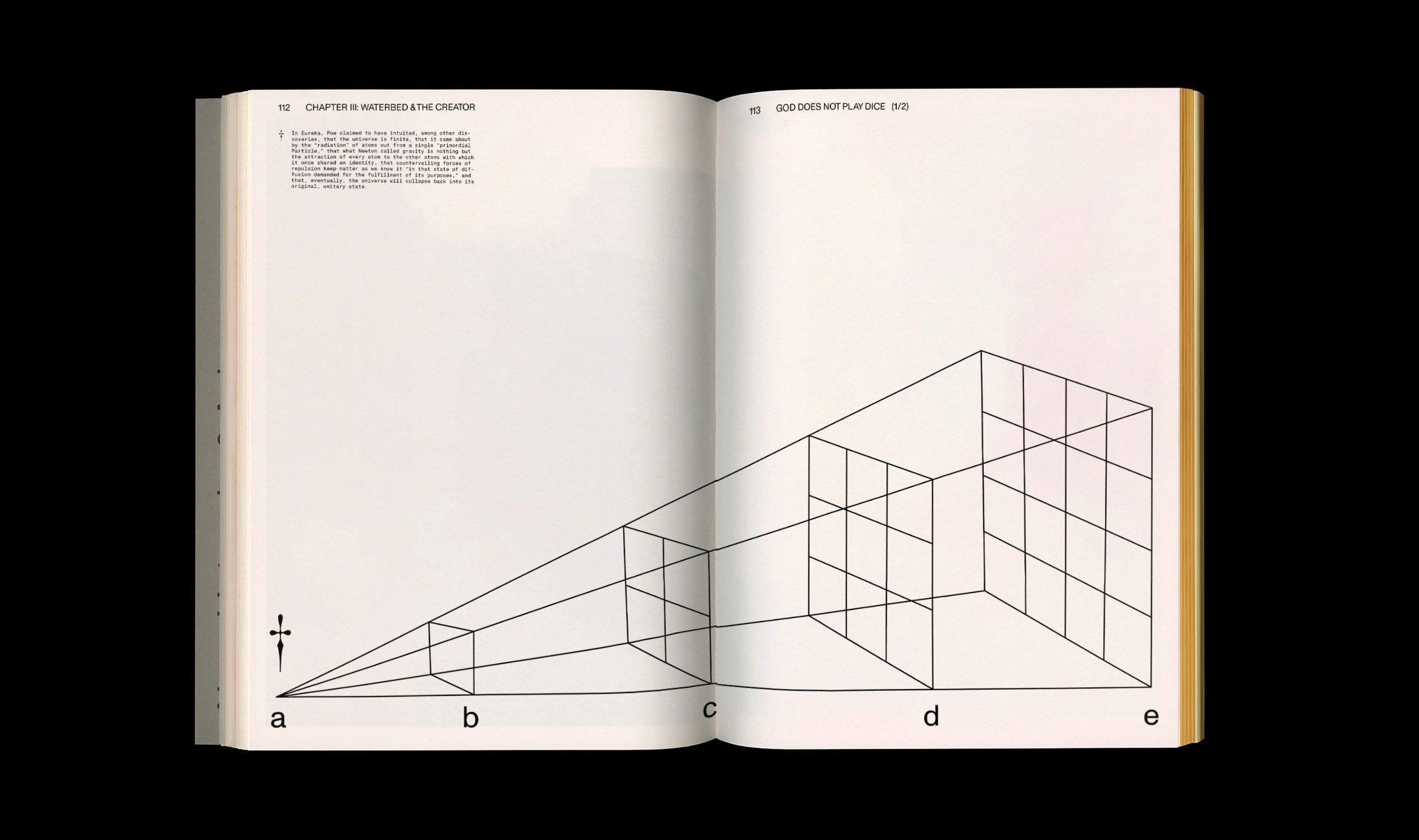


Chapter IV
(4/9)
IV.
Sherry & Portal Gun:
Multiverse Interpretation & Rick and Morty
Multiverse Interpretation & Rick and Morty
Hugh Everett, the American physicist who developed the many-worlds interpretation, and Rick and Morty share an interesting resemblance in their exploration of parallel universes. While Everett's theory remains theoretical, the show similarly delves into the concept of multiple, parallel worlds, drawing on ideas that align with Everett’s work in a more imaginative context.







Chapter V
(5/9)
V.
Double Slit & Buddhism:
Interference & Wave-Particle Duality
Interference & Wave-Particle Duality
The double-slit experiment in quantum physics and certain Buddhist teachings both emphasize the role of consciousness and perception in shaping our understanding of reality. These two theories suggest that observation and consciousness are fundamental aspects of how we experience the world.
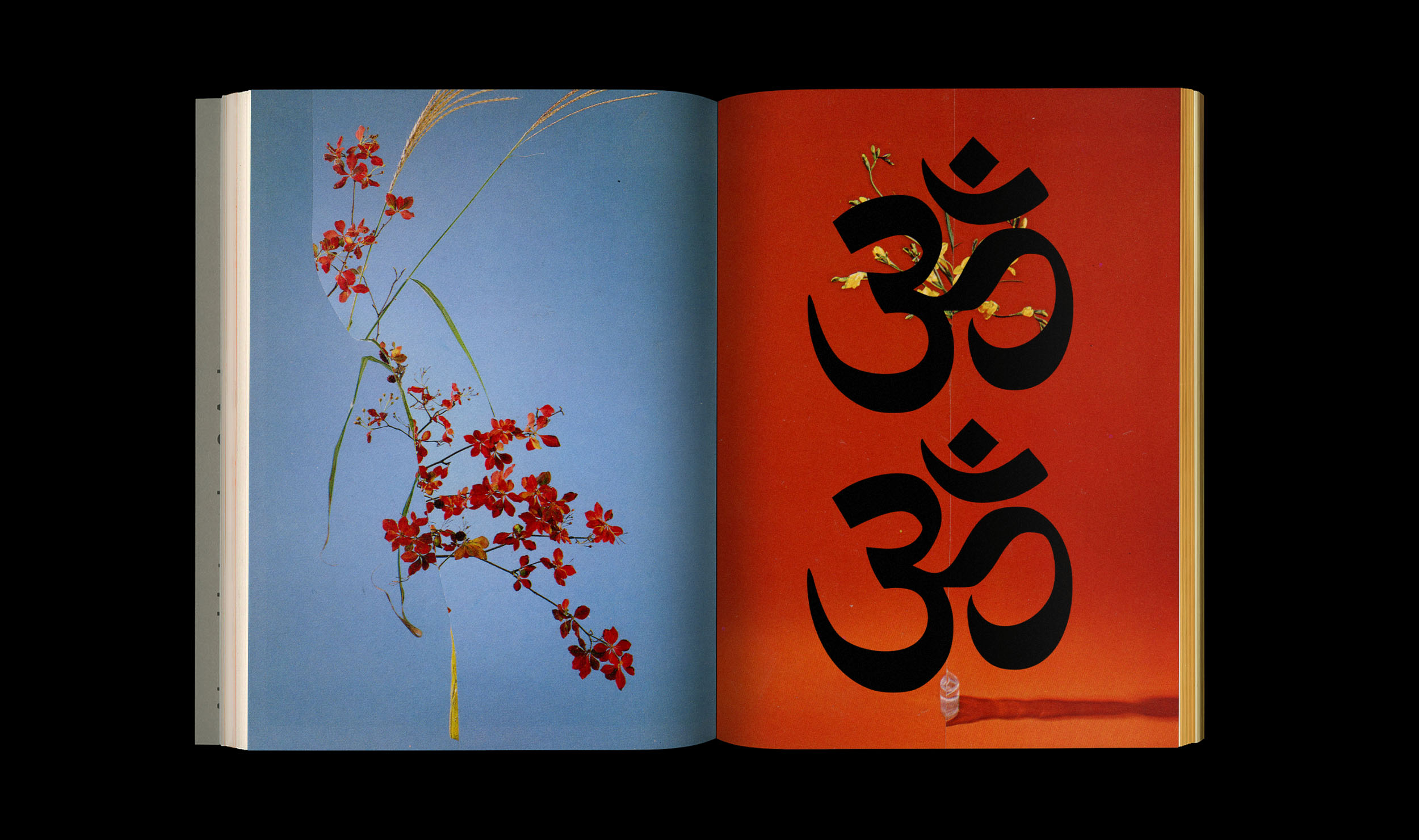






Chapter VI
(6/9)
VI.
Orpheus & Goldfish:
Quantum Interference & Brian Greene
Quantum Interference & Brian Greene
Brian Greene connects quantum interference and the myth of Orpheus and Eurydice by highlighting their shared theme of disruption: just as Orpheus's glance back disrupted their journey, quantum measurement disrupts the superposition of states, leading to a transition to a definite state.
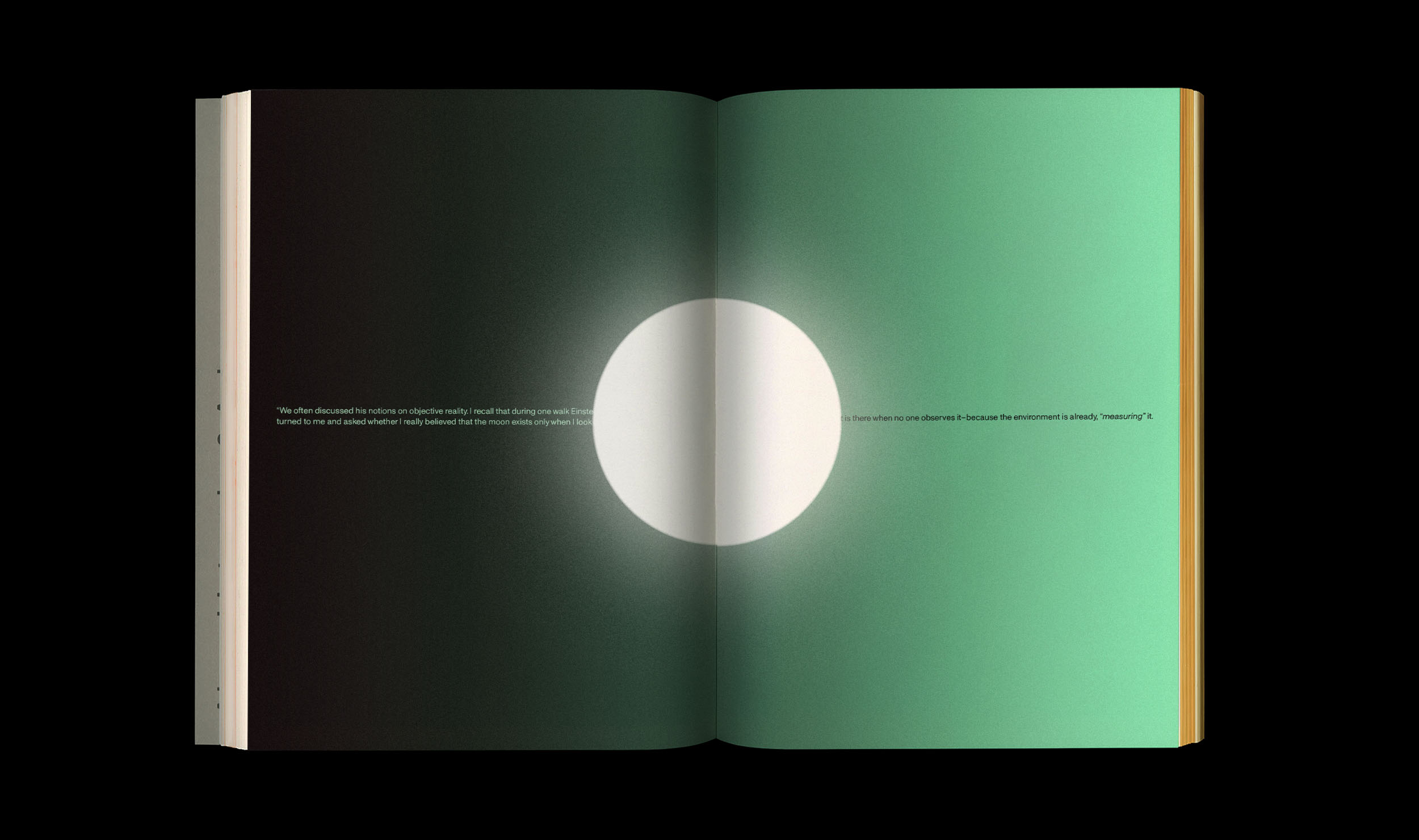

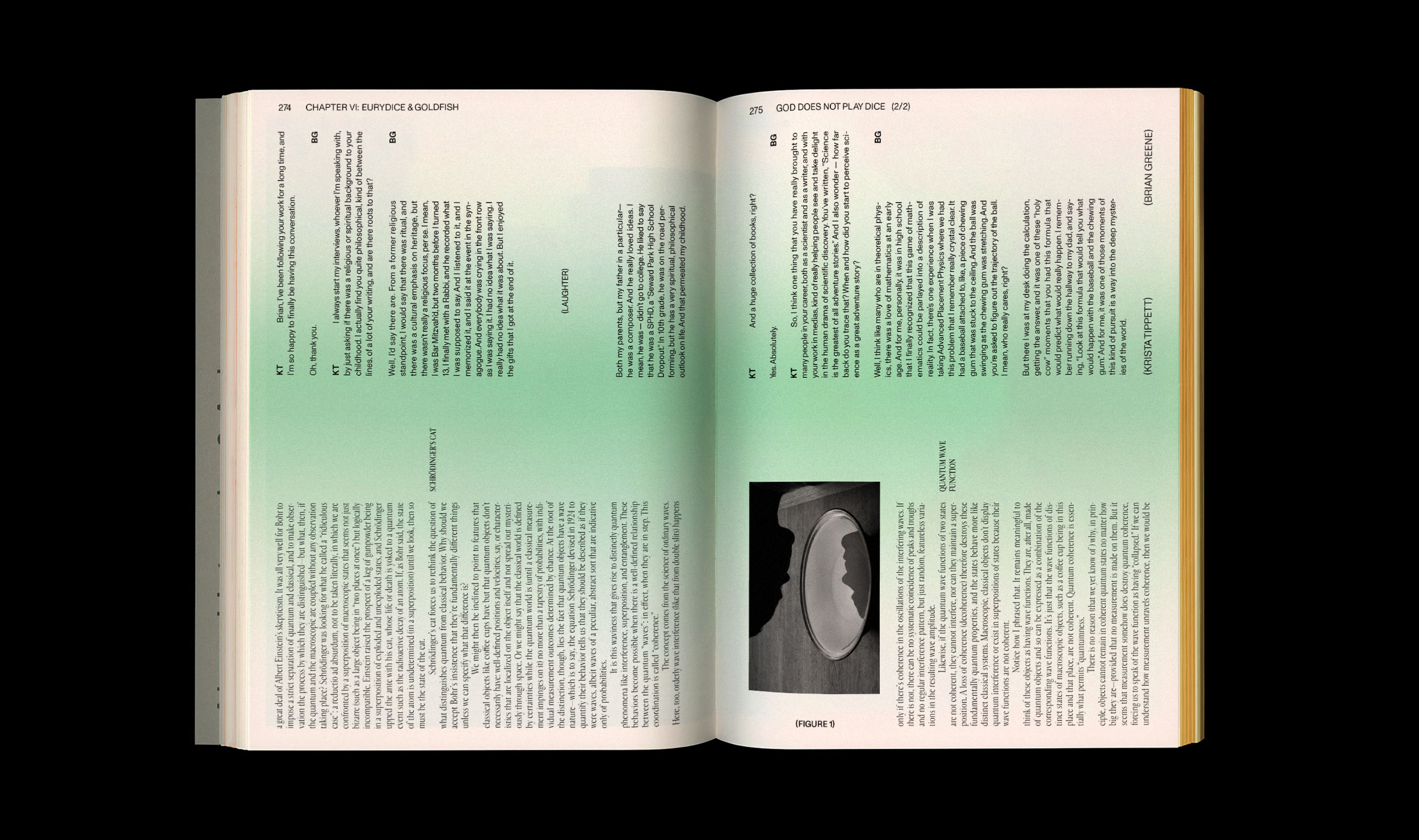



Chapter VII
(7/9)
VII.
Cakes & Gum:
Local Realism & Quantum Entanglement
Local Realism & Quantum Entanglement
Local realism and quantum entanglement both shape our universe's comprehension. Local realism, rooted in classical physics, assumes predetermined properties and no instant remote impact. In contrast, quantum entanglement challenges these ideas, giving rise to quantum mechanics as a novel framework.






Chapter VIII
(8/9)
VIII.
Time Travel & Timeline:
Time Traveler Paradox & History of Physics
Time Traveler Paradox & History of Physics
The time traveler paradox and the history of physics both revolve around the concept of progression. The paradox questions the logic of time travel, while the history of physics shows the development of our understanding of the universe, including past inconsistencies and resolutions.






Chapter IX
(9/9)
(9/9)
IX.
Index & Glossary
An editorial archive of all notable physicists, along with sources such as graphs, images, and diagrams used in the creation of this work.






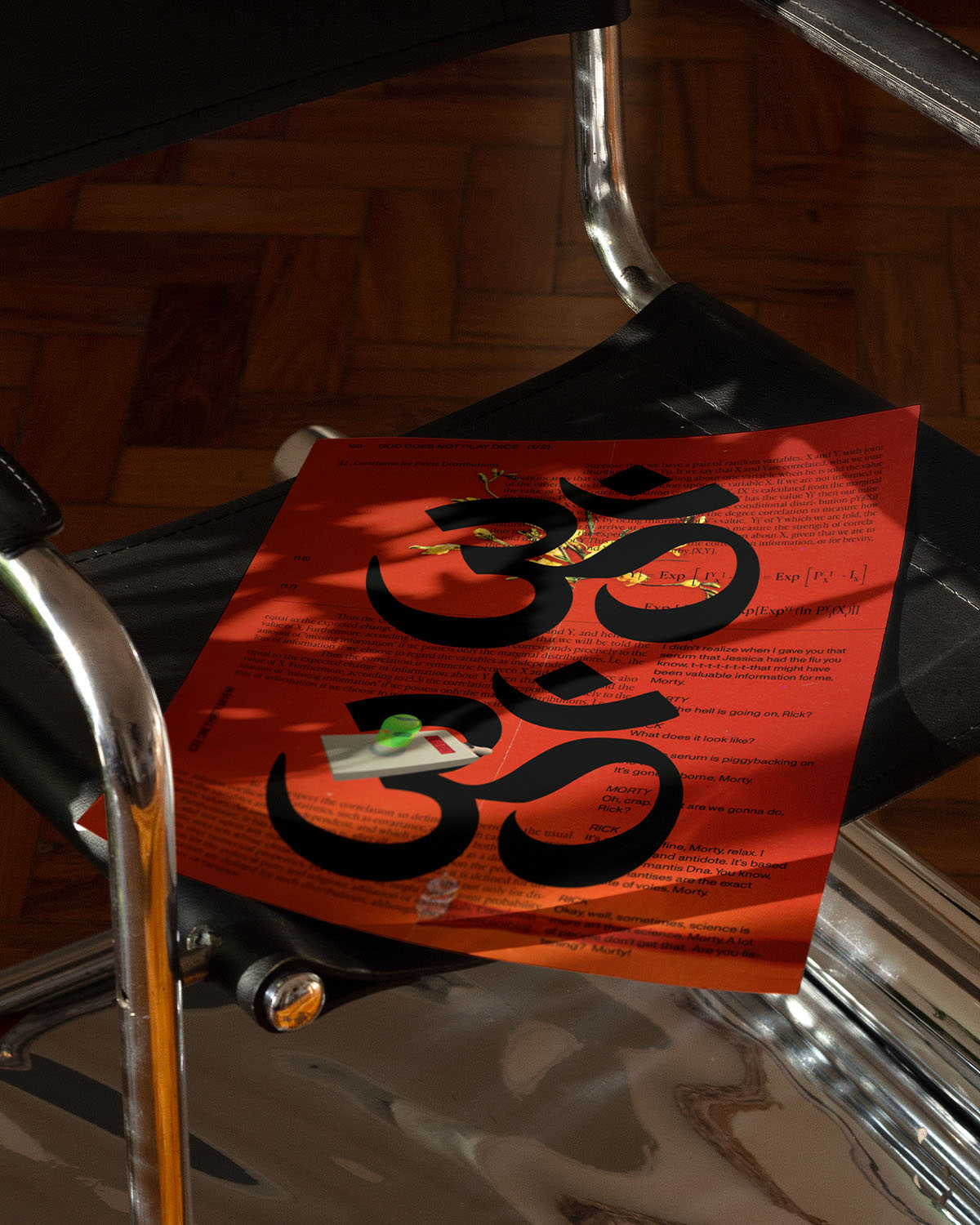
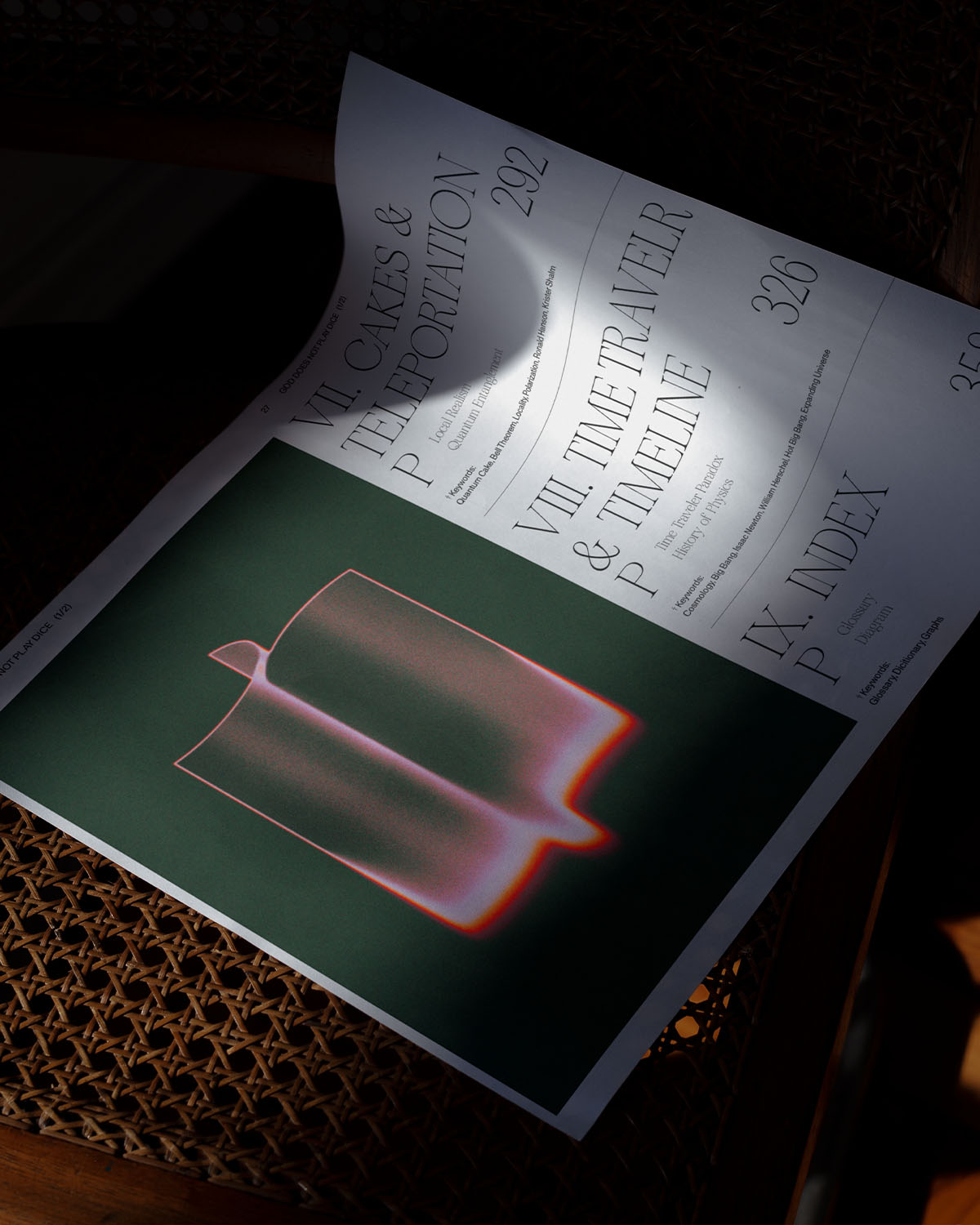
God Does Not Play Dice (1/2)
Client: Personal, 2020
This book reimagines quantum physics through the lens of design, drawing inspiration from the slit scan experiment and its revelation of duality. With contrasting elements in typography, layouts, and storytelling, it captures the fluid, ever-evolving nature of the universe.
By weaving together seemingly unrelated topics—such as Buddhism, Rick and Morty, Greek mythology, and pop culture—it traces the progression of our understanding of physics. Through these comparisons, the book illustrates how humanity's understanding of the universe has expanded, offering an engaging exploration that connects ancient perspectives with contemporary insights.
Dimensions: 7.5” * 11” | PageCount: 418
For more details: ︎︎︎Editorial System
By weaving together seemingly unrelated topics—such as Buddhism, Rick and Morty, Greek mythology, and pop culture—it traces the progression of our understanding of physics. Through these comparisons, the book illustrates how humanity's understanding of the universe has expanded, offering an engaging exploration that connects ancient perspectives with contemporary insights.
Dimensions: 7.5” * 11” | PageCount: 418
For more details: ︎︎︎Editorial System